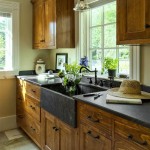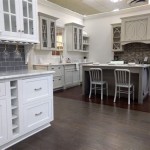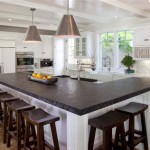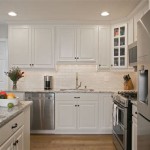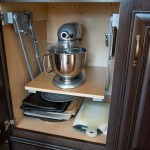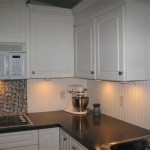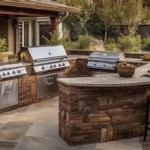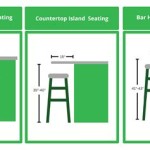Cabinet Covers for Kitchen Cabinets
Kitchen cabinets play a crucial role in both the functionality and aesthetics of a kitchen. Over time, cabinets can show wear and tear, become outdated, or simply no longer match evolving design preferences. Replacing cabinets entirely can be a costly and time-consuming endeavor. Cabinet covers offer a compelling alternative, providing a way to refresh the kitchen's appearance without the extensive investment of a full remodel.
What are Cabinet Covers?
Cabinet covers, also known as cabinet refacing, are thin, custom-fit materials applied directly over existing cabinet boxes. These covers can be made from a variety of materials, including rigid thermofoil (RTF), wood veneer, and laminate. They effectively conceal the old cabinet surfaces, creating a fresh, updated look. The existing cabinet structure remains intact, saving significant costs and reducing construction time compared to a full cabinet replacement.
Types of Cabinet Cover Materials
The choice of cabinet cover material influences both the final appearance and the overall cost of the project. Each material offers unique characteristics, making it essential to understand the advantages and disadvantages of each option.
Rigid Thermofoil (RTF)
RTF is a popular choice due to its affordability and durability. It consists of a thin vinyl sheet thermally bonded to a medium-density fiberboard (MDF) core. RTF is available in a wide range of colors and styles, mimicking the look of painted wood or other finishes. It is relatively easy to clean and resists moisture and stains, making it a practical choice for busy kitchens.
Wood Veneer
Wood veneer offers the natural beauty and warmth of real wood at a lower cost than solid wood cabinets. Thin sheets of wood are applied to a substrate, typically MDF or plywood. Veneer offers a variety of grain patterns and finishes, providing a more sophisticated look. However, it requires more care and maintenance than RTF and can be susceptible to scratches and moisture damage.
Laminate
Laminate cabinet covers are constructed by bonding a thin decorative layer to a particleboard or MDF core. Laminate is known for its durability, resistance to scratches and stains, and ease of maintenance. It is available in a wide range of colors, patterns, and textures, offering versatility in design. However, laminate can be prone to chipping if subjected to heavy impact.
Benefits of Using Cabinet Covers
Cabinet covers offer several advantages over traditional cabinet replacement, making them a popular choice for homeowners seeking a kitchen update.
Cost-Effectiveness
Refacing cabinets with covers is significantly less expensive than replacing the entire cabinetry. This cost savings can be substantial, allowing homeowners to allocate their budget to other aspects of the kitchen renovation.
Time Efficiency
The installation of cabinet covers is a much faster process than a full cabinet replacement. This reduced timeframe minimizes disruption to daily life and allows homeowners to enjoy their updated kitchen sooner.
Eco-Friendliness
By reusing the existing cabinet boxes, cabinet refacing contributes to sustainability by reducing waste. This approach aligns with environmentally conscious practices and minimizes the demand for new materials.
Design Versatility
Cabinet covers are available in a wide array of styles, colors, and finishes. This variety allows homeowners to achieve their desired aesthetic, whether it's a classic, modern, or contemporary look. The flexibility of cabinet covers makes it possible to transform the kitchen's appearance without altering the existing layout.
The Installation Process
The installation of cabinet covers typically involves several key steps. First, the existing cabinet doors and hardware are removed. The surfaces of the cabinet boxes are then cleaned and prepared for the application of the covers. The covers are meticulously measured and cut to fit precisely, then adhered to the cabinet boxes using specialized adhesives. New doors and hardware are installed, completing the transformation.
Choosing the Right Cabinet Covers
Selecting the right cabinet covers requires careful consideration of several factors. Budget constraints, desired aesthetic, and the level of maintenance required should all influence the decision. Consulting with a professional kitchen designer or contractor can provide valuable insights and guidance throughout the selection process, ensuring a successful and satisfying outcome.

Renter S Cabinet Cover Up Brighten Your Kitchen Cabinets Renovation

610 X 5 M 24 Gloss Self Adhesive Kitchen Cupboard Door Drawer Wardrobe Cover Ebay

How To Update Cabinets Using Contact Paper Rental Kitchen Makeover Cover Apartment

Renter S Cabinet Cover Up Brighten Your Kitchen Cabinets Hometalk

Kitchen Cabinet Cover Panels Storefront Life

Closing The Space Above Kitchen Cabinets Remodelando La Casa

Renter S Cabinet Cover Up Brighten Your Kitchen Cabinets Hometalk

Gloss Pink Wallpaper Contact Paper Oil Water Proof Kitchen Cupboard Door Cover Ebay
:strip_icc()/101995271-81401ccb79c9487f91a1478cfd3358d7.jpg?strip=all)
How To Wallpaper The Back Of A Cabinet

How To Paint Kitchen Cabinets Like The Pros

